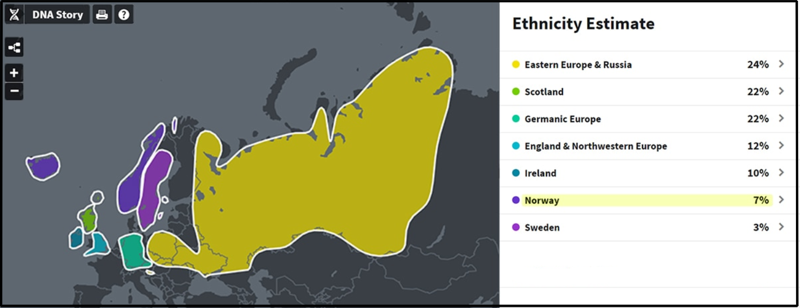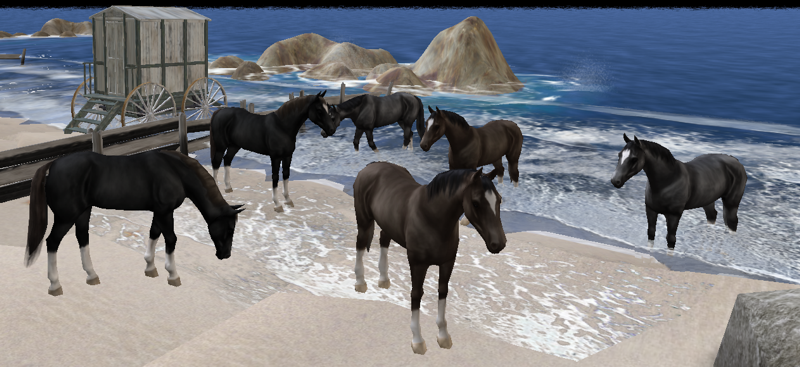
In the olden days, we pictured scientists working alone in a laboratory or in some remote field location and sharing their discoveries with a few colleagues at some annual learned symposium. This resulted in what I’d consider to be a slow osmosis of ideas with a gradual expansion of knowledge.
Today, computers allow the creation of huge databases and the Internet lets us share that data across the world. Not only do these resources increase communication and the exchange of ideas, they allows us to see relationships that were impossible to see earlier.
One interesting example comes from Ancestry.com. This is a data-based company that helps people to research and build their family trees. This service is used by millions of people around the world and holds that data in searchable databases and links to other databases, such as the US Census and military records. A few years ago Ancestry.com began offering DNA analyzes at a reasonable cost. To date, over 15 million DNA profiles have been created. Drawing on their databases, Ancestry.com will tell you where your relatives came from. See the sample results below. This is from the Ancestry.com web site and is not based on a real person. This is a fascinating service. It gives one an insight into personal history that would be unavailable without these huge, sharable databases.

Another aspect of using huge DNA databases comes from a National Geographic article I ran across (See Tamisiea in References). Off the coast of Virginia, are two islands, Chincoteague and Assateague, and on these islands live a unique breed of horse. These Chincoteague Ponies are found only on these two islands and no one is sure how they got there. Recent research into the migration patterns of horses, based on DNA samples, allows the tracing of horses from where horses were first domesticated in a “region in southern Russia, near the intersection of the Volga and Don Rivers… between 4,700 and 4,200 years ago” (Dzombak) and these singular survivors on two tiny islands.
From that first connection between humans and horses over 4,000 years ago on Russia, the partnership spread across Europe and horses were firmly established in Spain. We know that Spanish explorers brought horses from Spain to the Caribbean in the early 16th century. Researchers found a 450-year-old shard of horse tooth molar that archaeologists had collected in the 1980s in northern Haiti, at the site of an early Spanish colony called Puerto Real (Delsol). “The team focused on the horse’s mitochondrial DNA, a type of DNA passed down from an animal’s mother. They compared the Puerto Real horse’s mitogenome with a comprehensive analysis of more than 80 mitochondrial genomes of horse populations around the world. That revealed the Puerto Real horse’s closest relative was the Chincoteague pony.”

There is an unconfirmed story that the Chincoteague and Assateague horses arrived there as the result of a shipwreck. While there is no physical evidence of that event, this recent finding supports the notion that a Spanish ship from the Caribbean, on a trip up the Eastern coast, foundered and the horses made it to shore and were left there. Anyhow, this chain of evidence, based on DNA, shows that “the Caribbean horse and Chincoteague ponies share an evolutionary lineage that originated in Bronze Age Spain” (Tamisiea).
I decided to have Ancestry.com analyze my DNA. The results came back showing my origins to be 100% Linden Labs.
References
- Ancestry Surpasses 15 Million DNA Customers, Ancestry, May 31, 2019.
- Reading Your AncestryDNA® Ethnicity Estimate, Ancestry.
- Domestic horses’ mysterious origins may finally be revealed, Rebecca Dzombak, National Geographic, October 20, 2021.
- The origins and spread of domestic horses from the Western Eurasian steppes, P Librado, N Khan & L Orlando, Nature, October 20, 2021.
- Beloved Chincoteague ponies’ mythical origins may be real, Jack Tamisiea, National Geographic, July 27, 2022.
- Analysis of the earliest complete mtDNA genome of a Caribbean colonial horse (Equus caballus) from 16th-century Haiti, Nicolas Delsol et al, PLOS One, July 27, 2022.
- Pedigrees and the Study of the Wild Horse Population of Assateague Island National Seashore, Lori S. Eggert et al, Journal of Wildlife Management, 74(5), 963–973, 2010.
- Photographs of Chincoteague Ponies
- Misty of Chincoteague, Marguerite Henry, 1947. Fictional story sort of like My Friend Flicka.
 |
| Visits: 1623289 |
